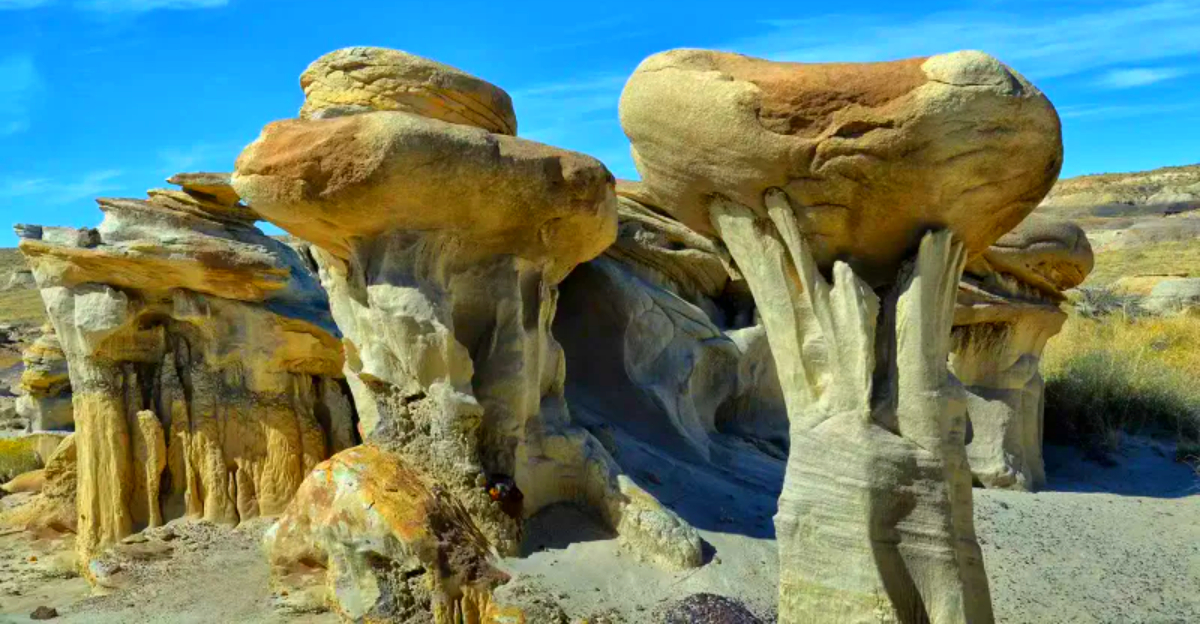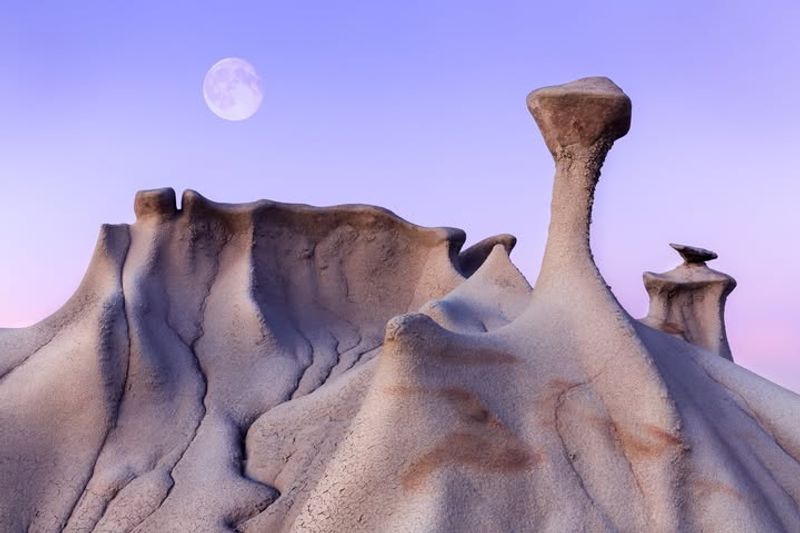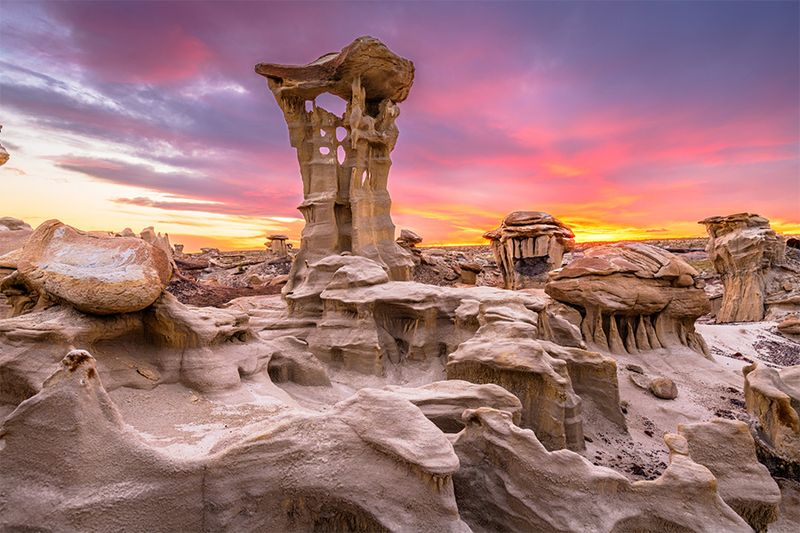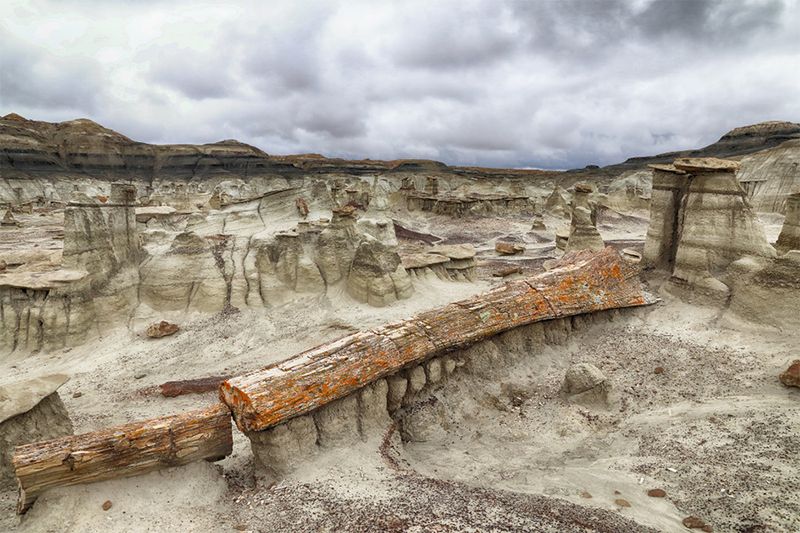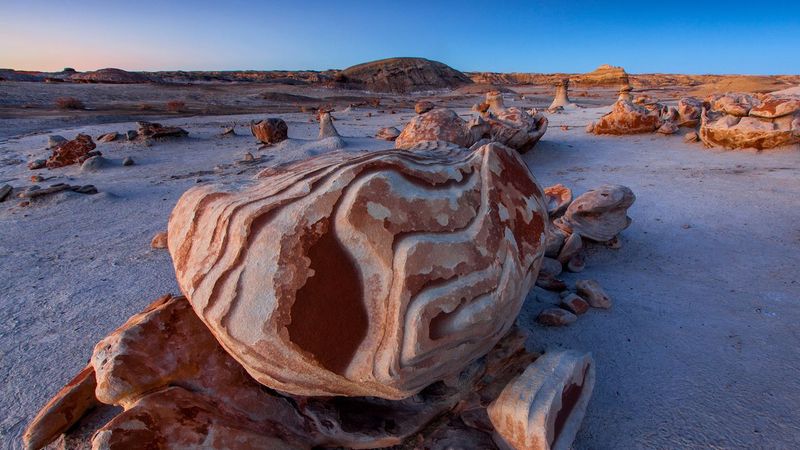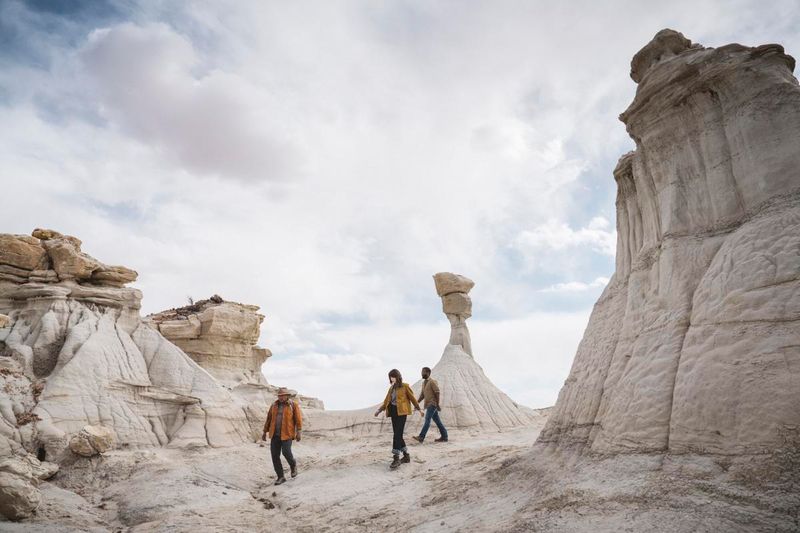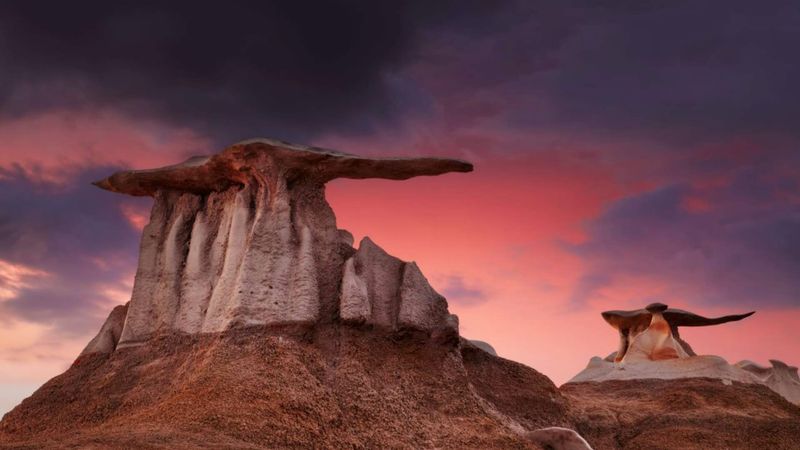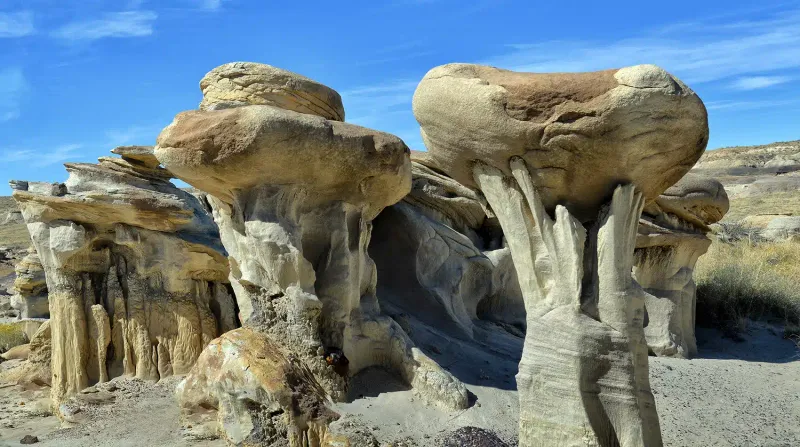Tucked deep in the high desert of northwestern New Mexico lies a place so strange, so eerily beautiful, it could easily double as the surface of Mars. The Bisti/De-Na-Zin Wilderness isn’t your typical travel destination – it’s a sprawling maze of twisted hoodoos, petrified wood, and lunar-like rock formations that seem straight out of a sci-fi film. There are no signs, no fences, and no crowds – just 45,000 acres of surreal silence and stone sculptures shaped by millions of years of wind and water. If you’ve ever wanted to know what it feels like to walk on another planet, this remote desert oasis might be the closest you’ll ever get – no spacesuit required.
1. It’s a Maze of Alien-Looking Rock Formations
The Bisti/De-Na-Zin Wilderness spans roughly 45,000 acres of badlands filled with bizarre rock spires, hoodoos, and balanced stones. Wind and water erosion sculpted these shapes over millions of years, creating formations that resemble everything from mushrooms to petrified spaceships. There’s a sense of stepping into a science fiction novel as you wander among these natural sculptures.
Every turn reveals a new surprise, with shapes that defy conventional understanding. This geological wonderland invites exploration and imagination. It’s a place where the earth’s artistry is on full display, offering an experience unlike any other. Walking through this maze, one might feel as if they’ve indeed left Earth behind.
2. The Name Has Ancient Roots
“Bisti” comes from the Navajo word Bis ’izhini, meaning “among the adobe formations.” “De-Na-Zin” translates to “cranes,” referring to ancient rock art depicting the birds found nearby. This name reflects the deep cultural and spiritual significance that the area holds for the Navajo Nation.
The echoes of history seem to resonate through the rocks, whispering stories from centuries past. Exploring these lands feels like connecting with ancient times, where the landscape itself is a storyteller. The names and meanings provide a window into the rich cultural tapestry that defines this region, offering more than just visual beauty but a profound historical journey.
3. It Was Once a Prehistoric Swamp
Believe it or not, this arid desert was once part of a lush Late Cretaceous swamp – around 70 million years ago. Fossilized remains of dinosaurs, turtles, and ancient trees have been found throughout the area, giving scientists a rare look at life from the age of the dinosaurs.
This prehistoric past adds a layer of intrigue to the landscape, transforming it into a living museum of natural history. Walking amid these fossils, one can almost imagine the swampy world that existed long before humans roamed the earth. It’s a reminder of the ever-changing nature of our planet and the mysteries it holds.
4. The “Egg Factory” Is Its Most Famous Spot
One of the most photographed sites in the wilderness is the Egg Factory, where round, egg-shaped stones are scattered across the desert floor. These strange “eggs” are actually concretions – solidified mineral deposits formed underground and later revealed by erosion.
The sight of these formations creates a fantastical ambiance that seems to defy explanation. Each stone tells the tale of geological processes that took millions of years, unfolding the earth’s hidden secrets. This spot draws photographers and adventurers alike, all seeking to capture the magic of this natural phenomenon. It’s a place where imagination and reality blur.
5. There Are No Trails – Just Pure Exploration
Unlike most national parks, there are no marked trails or visitor centers here. Visitors are encouraged to explore freely but must navigate using GPS, maps, or landmarks. This makes Bisti/De-Na-Zin one of the few places where you can truly feel lost on another planet.
The absence of trails adds an element of adventure and discovery, allowing each visitor to carve their own path. It’s a landscape that invites curiosity and exploration, where the journey itself becomes the destination. This raw, untamed wilderness captures the spirit of adventure, offering a unique escape from the ordinary.
6. Sunrise and Sunset Are Unforgettable
When the sun hits the sandstone formations, the colors shift from deep orange to violet and gray, giving the landscape an unreal glow. Many photographers consider sunrise and sunset the best times to capture the wilderness’s eerie beauty.
The changing light paints the rocks in hues that seem almost otherworldly, creating a visual spectacle that’s both mesmerizing and tranquil. Each dawn and dusk offers a different perspective, transforming the desert into a canvas of colors. It’s a moment where time seems to pause, allowing nature’s artistry to take center stage.
7. It’s Remote – But Accessible
The wilderness lies about 40 miles south of Farmington, New Mexico, near Highway 371. The final stretch is a gravel road, and while you don’t need a four-wheel drive in dry weather, it’s best to check conditions beforehand – rain can quickly turn the clay into slippery mud.
Despite its remote location, the area is surprisingly accessible, offering an escape into solitude without the need for arduous travel. This balance of remoteness and accessibility makes it a perfect getaway for those seeking a break from the hustle and bustle. It’s a journey into tranquility, where the road less traveled leads to endless wonder.
